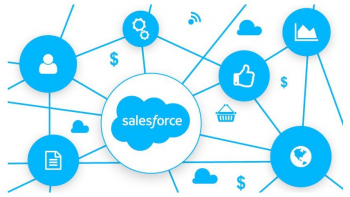Cisco CCNP Route (300-101): The Complete Course

About This Course
The CCNP Route 300-101 certification is your next step in your professional Cisco Career. When you complete this course you should be well prepared to take your certification exam and begin to join the professional world of Cisco Systems.
This certification is but one of three needed to obtain the highly sought after CCNP Routing & Switching. Not only will this be a mile stone in your IT career but it is also sought after by companies around the world that require a higher level of routing; the Professional Level.
DISCLAIMER: Please note that the simulators/emulators used in this course are not part of the course. It is the students responsibility to have these to practice with. The Cisco Packet Tracer and/or VIRAL (Virtual Internet Routing Lab) are Cisco proprietary software and can only be obtained through Cisco. It is up to each student to obtain the simulator/emulator of their choice to study along with this course.
This course will teach you the advance topics needed for IP’s among many others). How to configure Security using Time Based Access-list, Infrastructure Access-lists and IPsec.
You will learn how to filter routes, create prefix lists and so much more.
This course will give the knowledge required, no only to pass the CCNP exam, but it will help you in real world scenarios as well.
The CCNP Route (300-101): The Complete Course will be the only course you will need to prepare and pass your CCNP Route certification exam.
What are the requirements?
- Candidates for this course should know the basics of Routing protocols, subnetting and configuring in the CLI of a the Router.
- Students should have a CCNP book to follow along with the course.
- Student should have passed the CCNA certification or are in the process of passing the CCNA.
- Remember that Cisco will not allow anyone to advance to the professional level (CCNP), without first achieving the CCNA!
What am I going to get from this course?
- CCNP Course will help you understand the concepts need to get certified.
What is the target audience?
- Students that have passed or will pass the CCNA certification exam.
- Cisco does not let anyone advance to the CCNP withough first having the CCNA.
- Anyone that wants to advance their Cisco career to the Professional level.
- Anyone that is in the field and needs to understand the higher levels or professional levels, Cisco protocols covered within the CCNP
Course Staff

Lazaro Diaz
Network Engineer, Cisco & Microsoft Instructor
2016 will be the year to reach your goal!
If you are determined, ambitious and hungry for a new beginning…then 2016 should be your year.
…and how better to start the year than to get your CCNA!
Whether you are interested in the CCNA R/S, the CCNA Wireless or just want to understand the key topics of these certification exams, taking one or all of my courses, will get you a little closer to that goal.
But, don’t take my word for it…please take a look at the FREE previews (they are available in all my courses) and see for yourself.
As for me, 2016 will be the year of putting out new courses for different types of IT certifications among other things
What you wanted to know about me:
If you are tired of the same old methods of learning and want someone that is pretty much unconventional, but at the same time will provide you with an enjoyable learning experience in layman’s terms…then please preview my courses and you will discover that I am your guy.
I am a Network Engineer with over 14+ years in the field and in the teaching industry. I hold the following certifications: CCNA, CCNA Security, CCNA Voice, Security+, Network+, A+, MCP, MCTS & MOS and I just passed the first of two test for the CCIE! My teaching experience stems from teaching at institutions like Palm Beach Community College, New Horizons, Florida Career College (now Anthem College) and The Academy of South Florida, not to mention teaching at my own training facility in Miami, Florida.
Having been in all sides of the spectrum; as a student, a teacher/trainer, and in the field, I believe this uniquely qualifies me to understand the student, and what they have been exposed to as opposed to what they really want to accomplish. These two are sometimes extremely conflicting and frustrating. That is why I teach in the manner I do and can relate to the student’s rejection of the Status Quo.
I have taught corporate employees at MetroPCS (now T-Mobil) and have also taught IT professionals of companies like The Florida Marlins, Hospital personnel & Attorney’s firms amongst others to be able to acquire their CCNA certification and/or their Microsoft certifications; like the MOS (Microsoft Office Specialist). YES!…I am also an applications instructor and also teach Word, Excel, PowerPoint and Access.
I teach in an unconventional way that allows for students to understand the subject matter and can therefore, not only prepare them for a Cisco and/or Microsoft certification exam, but apply my methods in the real world. I strive to give the student a greater opportunity to compete in the current job markets. Do I go above and beyond what is needed for a certification?…YES, I do!…because it’s not only about getting a certification, it’s also about making sure the student is prepared for a job interview and/or maintaining their current job by enhancing their skills. This is where I step in and make sure that the student is prepared for whatever they need and make them an asset to their employer. Everyone has different requirements and I make sure, or at least I try, to provide information for most scenarios.
My classes and/or courses are very simple and that’s how I like to teach. If things are kept simple, easy and explained in a way that the student can grasp quickly and retain the information…then I have achieved my goal!
For those that do not know me yet, you may not be used to my style of teaching, but you will soon get accustomed to it :)… I’m very laid back, I try to make learning fun and I teach in layman’s terms…no physics jargon or mumbo jumbo in my teachings. My courses are very interactive and extremely dynamic!…you will not find my lectures monotone or boring, because falling asleep, for lack of excitement, is just NOT an option. Just take a look for yourself at my video previews, which I always provide on ALL my courses, so you can determine if I’m the right guy to help you get your industry specific certifications. 😉
I certainly hope that after a careful review of my credentials & testimonials (you can Google it you know!), I’m the Cisco & Microsoft Instructor you’re looking for!
Laz
Network Engineer,
Motivational Evangelist, Author,
Cisco & Microsoft Instructor
Frequently Asked Questions
What web browser should I use?
The EnlightMe platform works best with current versions of Chrome, Firefox or Safari, or with Internet Explorer version 9 and above.
Course Features
- Lectures 90
- Quizzes 0
- Duration 4 Hours/Week
- Skill level
- Language English
- Students 917
- Certificate No
- Assessments Self
-
Section 1: CCNP Route 300-101 course
- Lecture 1.1 Lecture 1:Introduction to the CCNP Route 300-101 Course Locked
-
Section 2: Routing Protocol Fundamentals
- Lecture 2.1 Lecture 2:Introduction to Section Locked
- Lecture 2.2 Lecture 3:What roles does routing play in an Enterprise Network Locked
- Lecture 2.3 Lecture 4:Which Routing Protocol should I use? Locked
- Lecture 2.4 Lecture 5:Interior or Exterior Routing Protocols Locked
- Lecture 2.5 Lecture 6:Different Categories of Routing Protocols Locked
- Lecture 2.6 Lecture 7:Summary of Section Locked
-
Section 3: Fundamentals of Networking Techonology
- Lecture 3.1 Lecture 8:Introduction to Section Locked
- Lecture 3.2 Lecture 9:Network Traffic Type Locked
- Lecture 3.3 Lecture 10:Network Architecture Types Locked
- Lecture 3.4 Lecture 11:Summary of Section Locked
-
Section 4: TCP/IP Fundamentals
- Lecture 4.1 Lecture 12:Introduction to Section Locked
- Lecture 4.2 Lecture 13:Characteristics of an IP Locked
- Lecture 4.3 Lecture 14:A Review of Routing Locked
- Lecture 4.4 Lecture 15:Characteristics of TCP Locked
- Lecture 4.5 Lecture 16:Characteristics of UDP Locked
- Lecture 4.6 Lecture 17:Summary of Section Locked
-
Section 5: Strategies on how to migrate a network
- Lecture 5.1 Lecture 18:Introduction to Section Locked
- Lecture 5.2 Lecture 19:Routing Protocol Changes Locked
- Lecture 5.3 Lecture 20:Migrating to IPv6 Locked
- Lecture 5.4 Lecture 21:Spanning tree Protocol Migration Preview Locked
- Lecture 5.5 Lecture 22:Migrating Virtual Networking Locked
- Lecture 5.6 Lecture 23:Summary of Section Locked
-
Section 6: Remote Connectivity
- Lecture 6.1 Lecture 24:Introduction to Section Locked
- Lecture 6.2 Lecture 25:MPLS Based VPN Locked
- Lecture 6.3 Lecture 26:Summary of Section Locked
-
Section 7: MPLS VPN Breakdown
- Lecture 7.1 Lecture 27:Introduction to Section Locked
- Lecture 7.2 Lecture 28:Layer 2 MPLS VPN Locked
- Lecture 7.3 Lecture 29:Layer 3 MPLS VPN Locked
- Lecture 7.4 Lecture 30:GRE Tunnel Locked
- Lecture 7.5 Lecture 31:Summary of Section Locked
-
Section 8: GRE DMVPN NHRP and IPSec
- Lecture 8.1 Lecture 32:Introduction to Section Locked
- Lecture 8.2 Lecture 33:DMVPN Locked
- Lecture 8.3 Lecture 34:Multipoint GRE Locked
- Lecture 8.4 Lecture 35:Next Hop Resolution Protocol or NHRP Locked
- Lecture 8.5 Lecture 36:Security using IPSec Locked
- Lecture 8.6 Lecture 37:Summary of Section Locked
-
Section 9: IPv6 Review and RIPng
- Lecture 9.1 Lecture 38:Introduction to Section Locked
- Lecture 9.2 Lecture 39:The Beginning of IP Addresses Locked
- Lecture 9.3 Lecture 40:IPv4 to IPv6 Locked
- Lecture 9.4 Lecture 41:Types of IPv6 Addresses Locked
- Lecture 9.5 Lecture 42:Configuring on IPv6 Addresses Locked
- Lecture 9.6 Lecture 43:Using the RIPng Locked
- Lecture 9.7 Lecture 44:Summary of Section Locked
-
Section 10: EIGRP on Cisco Routers
- Lecture 10.1 Lecture 45:Introduction to Section Locked
- Lecture 10.2 Lecture 46:The Basics of EIGRP Locked
- Lecture 10.3 Lecture 47:How does EIGRP create it’s neighbors? Locked
- Lecture 10.4 Lecture 48:Neighborships over WAN Locked
- Lecture 10.5 Lecture 49:Summary of Section Locked
-
Section 11: Advanced EIGRP Concepts
- Lecture 11.1 Lecture 50:Introduction to Section Locked
- Lecture 11.2 Lecture 51:Building the EIGRP Topology Table Locked
- Lecture 11.3 Lecture 52:Building the IP Routing Table Locked
- Lecture 11.4 Lecture 53:Optimizing EIGRP Convergence Locked
- Lecture 11.5 Lecture 54:Route Filtering Locked
- Lecture 11.6 Lecture 55:Summary of Section Locked
-
Section 12: Named EIGRP
- Lecture 12.1 Lecture 56:Introduction to Section Locked
- Lecture 12.2 Lecture 57:EIGRP for IPv6 Locked
- Lecture 12.3 Lecture 58:Named EIGRP Locked
- Lecture 12.4 Lecture 59:Summary of Section Locked
-
Section 13: Fundamentals OSPF Concepts
- Lecture 13.1 Lecture 60:Introduction to Section Locked
- Lecture 13.2 Lecture 61:OSPF Neighbors and Adjacencies on LANs Locked
- Lecture 13.3 Lecture 62:Virtual Links Locked
- Lecture 13.4 Lecture 63:Summary of Section Locked
-
Section 14: Advanced OSPF Concepts
- Lecture 14.1 Lecture 64:Introduction to Section Locked
- Lecture 14.2 Lecture 65:Route Filtering Locked
- Lecture 14.3 Lecture 66:Route Summarization Locked
- Lecture 14.4 Lecture 67:Default routes and Stub Areas Locked
- Lecture 14.5 Lecture 68:OSPF Version 3 Locked
- Lecture 14.6 Lecture 69:Summary of Section Locked
-
Section 15: Route Redistribution
- Lecture 15.1 Lecture 70:Introduction to Section Locked
- Lecture 15.2 Lecture 71:Route Redistribution Basics Locked
- Lecture 15.3 Lecture 72:Redistribution between EIGRP and OSPF Locked
- Lecture 15.4 Lecture 73:Redistribution with route Maps and Distribute Lists Locked
- Lecture 15.5 Lecture 74:Summary of Section Locked
-
Section 16: Route Selection
- Lecture 16.1 Lecture 75:Introduction to Section Locked
- Lecture 16.2 Lecture 76:Policy Base Routing Locked
- Lecture 16.3 Lecture 77:IP service level agreement Locked
- Lecture 16.4 Lecture 78:Summary of Section Locked
- Lecture 16.5 Section 17: Fundamentals of BGP Concepts Locked
- Lecture 16.6 Lecture 80:Introduction to BGP Locked
- Lecture 16.7 Lecture 81:External BGP for Enterprises Locked
- Lecture 16.8 Lecture 82:Verifying the BGP Table Locked
- Lecture 16.9 Lecture 83:Summary of Section Locked
-
Section 18: Routing Protocol Authentication
- Lecture 17.1 Lecture 84:Introduction to Section Locked
- Lecture 17.2 Lecture 85:Authentication Methods Locked
- Lecture 17.3 Lecture 86:EIGRP Authentication Locked
- Lecture 17.4 Lecture 87:OSPF Authenticaiton Locked
- Lecture 17.5 Lecture 88:BGP Authentication Locked
- Lecture 17.6 Lecture 89:Summary of Section Locked
-
Section 19: Course Summary
- Lecture 18.1 Lecture 90:Summary of Course Locked











